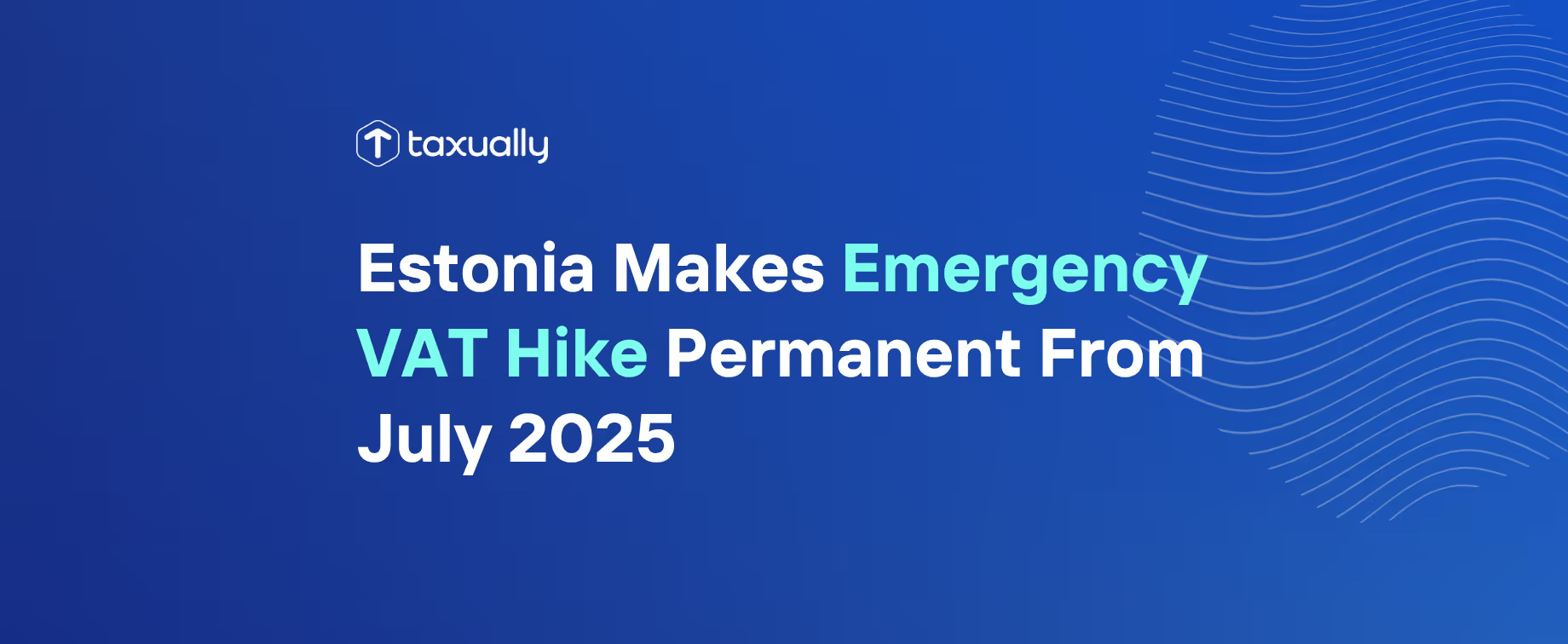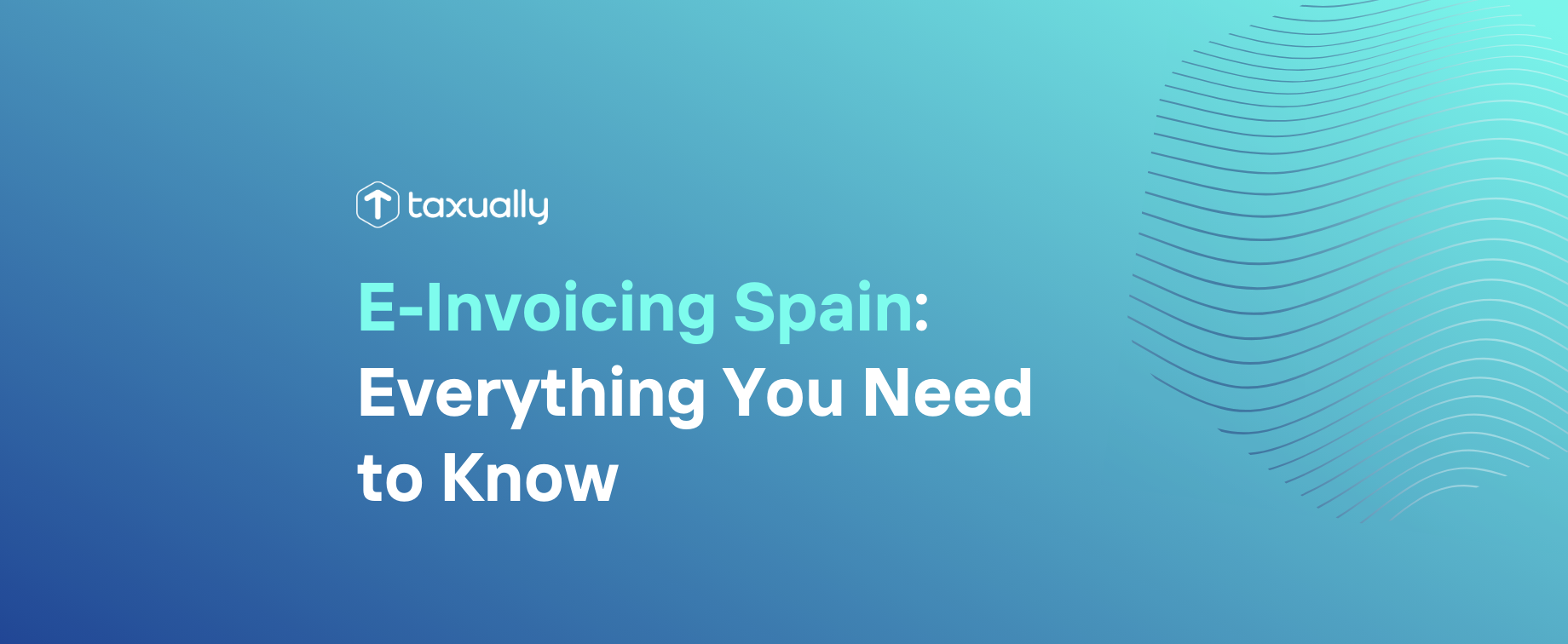Key takeaways
- Estonia has made its temporary VAT hike permanent: standard rate rising from 22% to 24% effective July 1, 2025.
- The government originally planned to reverse the hike in 2028 but will now keep it indefinitely to fund national defense.
- Old contracts (before May 1, 2023) may still apply the 20% rate until June 30, 2025, after which 24% applies.
- Additional fiscal measures include income tax increases, a new security tax (2%), and higher reduced VAT rates.
- Businesses must update billing, accounting, and pricing systems to apply the new rate by July 1.
Estonia has confirmed that its temporary emergency VAT hike—introduced to fund national defense—will now become a permanent change. Starting July 1, 2025, the standard VAT rate will rise from 22% to 24%, and it won’t be rolled back after 2028 as originally planned.

Why the change?
The 2% increase was first approved in 2023 as a temporary measure to respond to growing security threats from Russia’s invasion of Ukraine. The plan was to return to the previous rate at the end of 2028, but Estonia’s Finance Minister and Prime Minister have now announced that the higher rate is here to stay. The money will help fund long-range weapons and ammunition.
Contracts with the old rate
If you signed a contract before May 1, 2023, with the old 20% VAT rate, and that contract didn’t include a clause for VAT changes, you can still apply the 20% rate—but only until 30 June 2025. After that, the 24% rate will be applicable. This shortened transition period is meant to create consistency across all standard-rated transactions and ensure fair application of the new rate.
Other tax changes coming in 2025 and 2026
VAT isn’t the only tax going up. Estonia is introducing a wave of new measures to boost government revenue:
- Corporate and personal income tax: Increasing from 20% to 22% from January 1, 2025. These rises are still expected to be reversed after 2028.
- New security tax: A 2% tax on individual income and corporate earnings is set to come into effect in 2026.
- Reduced VAT rates are also rising:
- Accommodation: Going from 9% to 13% (but staying below the standard rate)
- Press publications: Increasing from 5% to 9%
- Accommodation: Going from 9% to 13% (but staying below the standard rate)
Estonia’s economy has struggled in recent years, shrinking by 1.3% in 2022. The government is prioritizing defense spending in response to the ongoing security threat from Russia. While taxes are rising, Estonia still maintains one of the most competitive tax systems in the OECD thanks to its flat-rate model and transparency.
What do the changes mean for you?
If your business charges Estonian VAT, you’ll need to ensure you do the following by July 1, 2025:
- Update your invoicing and accounting systems: Reflect the new rate in all applicable tools and templates.
- Review pricing and automated VAT processes: Ensure the correct rate is applied across your systems, especially in automated workflows.
- Notify your finance, billing, and sales teams: Make sure all relevant departments are aware of the change and prepared for implementation.
Unsure whether this update affects your business? Feel free to get in touch.
Frequently asked questions
New Year's Day - 1/1/2024Memorial Day - 5/27/20244th of July - 7/4/2024Labor Day - 9/2/2024Thanksgiving Day - 11/28/2024Day after Thanksgiving - 11/29/2024Christmas Eve - 12/24/2024Christmas Day - 12/25/2024
When does Estonia’s new VAT rate take effect?
The standard VAT rate increases from 22% to 24% on July 1, 2025.
Why was the VAT hike made permanent?
To provide stable funding for national defense following regional security concerns.
Can old contracts still use the 20% rate?
Yes, but only contracts signed before May 1, 2023, without VAT adjustment clauses — and only until June 30, 2025.
What other tax changes are coming?
Corporate and personal income taxes will rise to 22% in 2025, plus a new 2% security tax in 2026.
Are reduced VAT rates also changing?
Yes — accommodation increases to 13% and press publications to 9%.
What should businesses do to prepare?
Update accounting, invoicing, and ERP systems to reflect the new VAT rate by July 1, 2025.
Does Estonia remain competitive despite tax hikes?
Yes. Its flat, transparent tax model still ranks among the most efficient in the OECD.



















